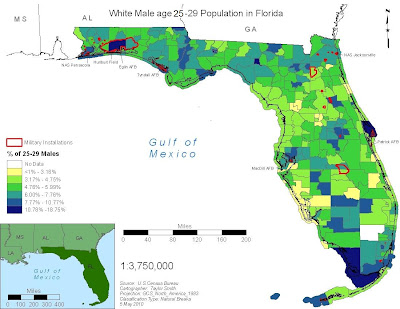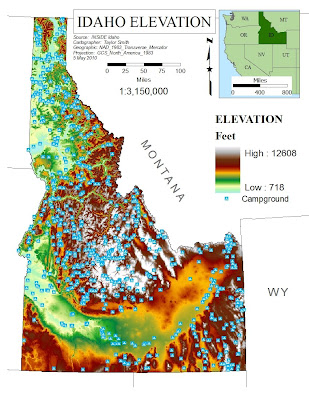For my final project, I chose to do an Idaho map and a Florida map. The Idaho map is an elevation map that also outlines every campground in Idaho. I chose to do an elevation map because I’ve always been interested in the elevation changes and variations within Idaho. It is a known fact that if you were to lay Idaho at an even elevation and stretched it out, the state of Idaho would be bigger than the state of Texas! Ever since I learned this little bit of information it has been an interesting thing to ponder about and think what it would be like to have “everything’s bigger in Idaho” type conversations, rather than “everything’s bigger in Texas” type conversations. The campground layer gives you a perspective on how elevation and campgrounds are correlated (more on this later).
The second map I made was a population distribution in the state of Florida. I am a 27 year old white male and I wanted to see where my demographic was a majority in Florida. I will be moving to Florida this summer and will be stationed at Naval Air Station (NAS) Pensacola. This is why I also added a “military installations” layer in my Florida map. It is neat to see the distribution of my demographic and how well it is related to military instillations within Florida.
--Old Map--

--New Map--

--Old Map--

--New Map--











